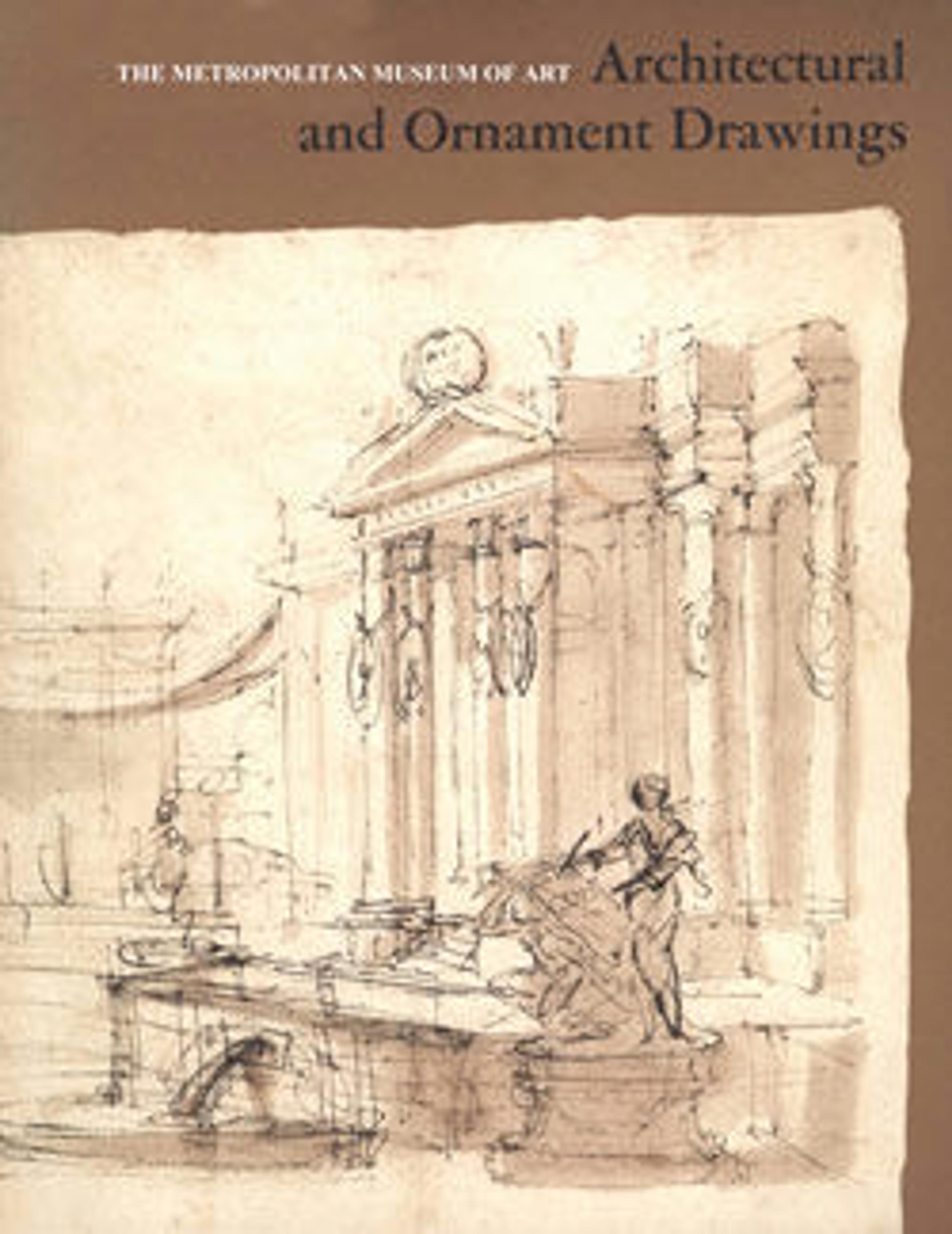Design for the Salon of the Pleasure Pavilion, Favorita, at Ludwigsburg, 1718
This impressive drawing shows a design for a Salon, meant for the pleasure pavilion and hunting castle called ‘Favorita’ in the park of the Palace of Ludwigsburg. The rich, almost fully symmetrical design is executed in a late Baroque style and is decorated all over with gilt stucco ornaments. The latter were an (North) Italian specialty and it leaves no wonder that this interior was designed by an Italian architect and stucco artist: Donato Giuseppe Frisoni. He came to Ludwigsburg in 1709 as a partner of Tommaso Soldati (Bergamo, active first quarter of the 18th century), but by 1715 he was named head architect by his patron Duke Eberhard Ludwig of Württemberg. This design for a Salon at the pleasure pavilion Favorita was made in 1718 and carries the handwriting of both men. In the inscription below, Frisoni describes the room and the materials it will be executed in: glass mirrors, marble and stucco. He also mentions that the ceiling was to be painted in fresco. At the lower left, the Duke has left his initials as a sign of his approval of the design.
Artwork Details
- Title:Design for the Salon of the Pleasure Pavilion, Favorita, at Ludwigsburg, 1718
- Artist:Donato Giuseppe Frisoni (Italian, Laino, near Como 1683–1735 Ludwigsburg)
- Date:1718
- Medium:Pen with brown and gray ink, brush with gray, rose, and yellow green wash, highlighted with gold, over ruled construction; design framed with pen and brown ink outlines
- Dimensions:19-1/2 x 25-3/8 in. (49.5 x 64.5 cm)
- Classifications:Drawings, Ornament & Architecture
- Credit Line:Gift of Leon Dalva Sr., 1965
- Object Number:65.654.1
- Curatorial Department: Drawings and Prints
More Artwork
Research Resources
The Met provides unparalleled resources for research and welcomes an international community of students and scholars. The Met's Open Access API is where creators and researchers can connect to the The Met collection. Open Access data and public domain images are available for unrestricted commercial and noncommercial use without permission or fee.
To request images under copyright and other restrictions, please use this Image Request form.
Feedback
We continue to research and examine historical and cultural context for objects in The Met collection. If you have comments or questions about this object record, please contact us using the form below. The Museum looks forward to receiving your comments.
